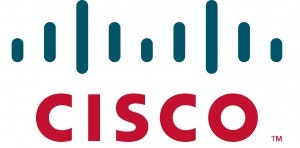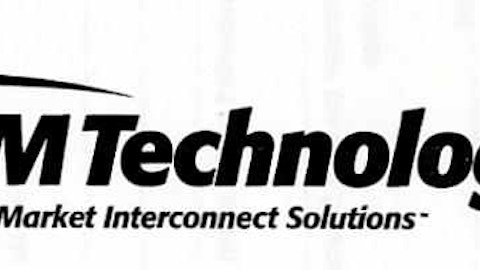
Cisco Systems, Inc. (NASDAQ:CSCO) is looking to cater to this demand by adding valuable network-management solutions to its product portfolio. So is Cisco on the right track?
Cisco on a buying spree
Cisco Systems, Inc. (NASDAQ:CSCO) recently announced it is buying Ubiquisys for $310 million. Ubiquisys is the number-one small-cell access-point vendor and has some 70 carrier customers and others on its books, including T-Mobile, Google Inc (NASDAQ:GOOG), SFR and Softbank.
Small-cell technology assists wireless carriers in fighting network congestion by offloading mobile-data traffic onto a wired backhaul. Ubiquisys is also into self-optimizing network architecture, which enhances network capacity by dynamically allocating resources according to real-time changing demands. Ubiquisys will also be able to help Cisco’s cloud-deployment strategy with the Ubiquisys Smart Cell using EdgeCloud technology.
Cisco Systems, Inc. (NASDAQ:CSCO) com pleted its acquisition of Intucell earlier this year. Intucell has developed a very impressive self-optimizing network (SON) architecture, which enables networks to automatically adjust cell activity based on demand. That makes network congestion far more unlikely and outages far less severe. Intucell’s software also helps networks repair themselves.
In the long term, SON techniques like Intucell’s will become foundational technology for the future heterogeneous network. AT&T Inc. (NYSE:T) is one of Intucells biggest customers. AT&T Inc. (NYSE:T) deployed Intucell’s SON technology, which resulted in a 15% reduction in network congestion and improved call retain ability.
Cisco Systems, Inc. (NASDAQ:CSCO) also acquired Meraki, which provides Wi-Fi, switching, security and mobile device management via a centralized cloud platform. This purchase moves Cisco further toward a software and cloud-based business model.
Cisco’s foray into software-defined networking.
Software-defined networking (SDN) is fast emerging as a significant building block for next-generation carrier services and networks as it could add significant value in the process to redefine and optimize the data center. The worldwide market for software-defined networking products and services in the enterprise and cloud service-provider segments will grow from $360 million in 2013 to $3.7 billion by 2016, according to IDC.
Cisco Systems, Inc. (NASDAQ:CSCO) is taking quick actions to adopt SDN in its portfolio. It’s targeting five markets at once – data center, enterprise, service provider, cloud, and academia – with its strategy by adopting an open network environment.
It invested $100 million in Insieme, a start-up developing an SDN with an option of buying it at $750 million in future. This start-up will kick-start Cisco’s foray into SDN.
Cisco Systems, Inc. (NASDAQ:CSCO) also acquired Cariden with a price tag of $141 million. It provides service- optimization services to Verizon Communications Inc. (NYSE:VZ), Deutsche Telecom – the German owner of T-Mobile USA, SingTel, among others, and helps them perform real-time analysis of their network traffic and topology. It also helps service providers plan how they deploy new services on the network.
Newcomers
Alcatel Lucent SA (ADR) (NYSE:ALU) announced at the beginning of April that it’s entering the enterprise SDN field, making it one of the latest networking companies hopping in. The company created a start-up named Nuage Networks to create an SDN solution. It will incorporate the “Virtualized Services Platform (VSP).” Like other SDN technologies, VSP virtualizes the network infrastructure and automatically creates connectivity among computer resources.
Alcatel Lucent SA (ADR) (NYSE:ALU)’s new CEO Michel Combes is an experienced businessman and is well known for his cost-cutting measures. His cost-reduction plans may bring some improvement to the company’s performance and are also part of the reason why Deutsche Bank recently upgraded the stock from Hold to Buy with a price target of $2.34.
The company sells more than $20 billion in telecom equipment each year. With strong growth in IP and fixed-networks segments, along with strong demand from China’s TD-LTE expansion, both Alcatel Lucent SA (ADR) (NYSE:ALU)’s bottom line and top line should improve in coming years. Analysts expect the EPS to reach $0.58 by 2015 from -$0.25 in 2013. That’s a gain of more than 300%.
VMware, Inc. (NYSE:VMW) augmented the SDN fray with its acquisition of Nicira. VMware’s NSX software, which draws from the company’s existing vCloud Networking and Security software in addition to the Nicira offering, lets customers spin up virtual switches, firewalls, routers and other network elements in conjunction with hypervisors regardless of whether they come from VMware.
VMware, Inc. (NYSE:VMW) has come up with a new hybrid cloud service, which is expected to boost revenue for the company in the coming years. The company has a solid balance sheet with approximately $4.7 billion in cash and just $450 million in debt. Analysts currently have a mean target price of $97.36 for VMware, Inc. (NYSE:VMW), and are predicting an EPS of $3.23 with revenue of $5.2 billion, which is 13.3% higher than 2012 revenue.
Conclusion
It will take time to see the final outcome of Cisco’s strategic transition, but with the above mentioned events in mind the company seems to be back on track. Cisco Systems, Inc. (NASDAQ:CSCO) currently has a low P/E of 9.8, which makes it a value buy. When the Street takes its future growth prospects into account, the stock should trade at higher valuations which would be accretive to the stock price.
The article Is Cisco in Transition Mode? originally appeared on Fool.com and is written by Hemant Singhi.
Copyright © 1995 – 2013 The Motley Fool, LLC. All rights reserved. The Motley Fool has a disclosure policy.
